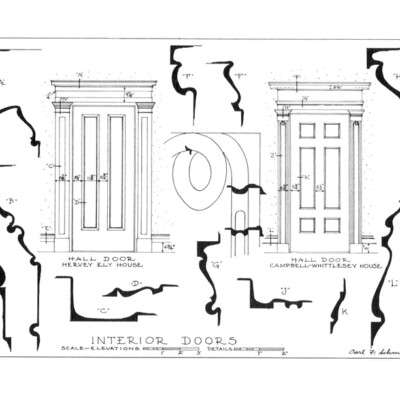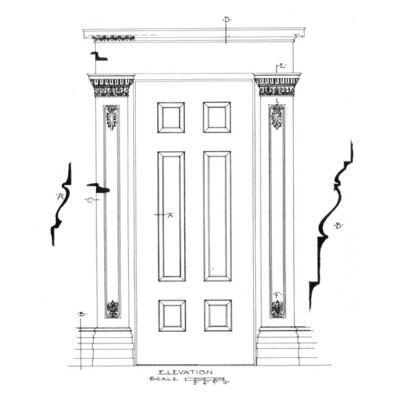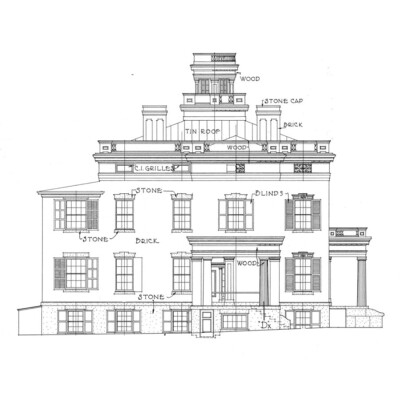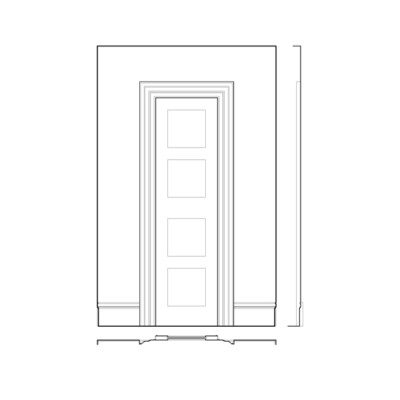Historic Houses of Rochester, New York
In 1811, Colonel Nathaniel Rochester laid out the village of Rochesterville near Lake Ontario with potential for water-powered mills created by cataracts on the Genesee River. By 1823, an aqueduct joined the western and eastern sections of the Erie Canal, linking the vast Midwest with the Hudson River and New York City. By the 1830s, Rochester was the largest flour-producing city in the United States.
While much of the earliest architecture of Rochester has been lost to development and urban renewal, many examples of residential architecture inspired by builders’ manuals survive. Many houses resemble a classical temple exemplified by the Hervey Ely House in the Corn Hill neighborhood. Other examples exist throughout the area, sometimes built as urban city houses or farmhouses but distinguished by their three-bay-wide front façades.
The Irondequoit Chapter of the Daughters of the American Revolution purchased the Hervey Ely House in 1920 and has stewarded it since then. Nearby, in 1937, in the Corn Hill neighborhood, the Landmark Society of Western New York was founded to protect and preserve the Campbell-Whittlesey House. Local historian and architect Carl F. Schmidt began to document the surviving examples, publishing articles and books on the subject. By 1969, the city had passed the Rochester Preservation Ordinance, allowing the establishment of historic districts and the designation of individual landmarks. Elegant, architect-designed buildings comprise the East Avenue historic district, while the Brown’s Race historic district allows a glimpse into Rochester’s earliest industrial past. The Genesee Country Village and Museum gathered endangered historic buildings into a living history museum at Mumford, New York.
 CAMPBELL-WHITTLESEY HOUSE
CAMPBELL-WHITTLESEY HOUSE HERVEY ELY HOUSE
HERVEY ELY HOUSE HOUSE AT 75 SOUTH FITZHUGH STREET
HOUSE AT 75 SOUTH FITZHUGH STREET HOUSE IN SCOTTSVILLE, NEW YORK
HOUSE IN SCOTTSVILLE, NEW YORK JONATHAN-CHILD HOUSE
JONATHAN-CHILD HOUSE LIVINGSTON PARK SEMINARY
LIVINGSTON PARK SEMINARY SILAS O. SMITH HOUSE
SILAS O. SMITH HOUSE STEWART-HOOPER HOUSE
STEWART-HOOPER HOUSE VANCE HOUSE
VANCE HOUSE